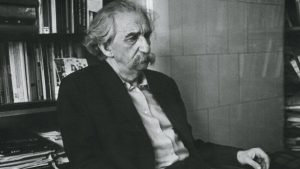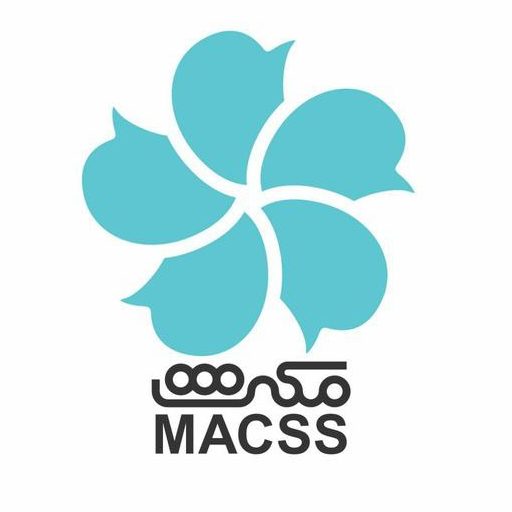لوتمان، یوری

یوری ام. لوتمان (همچنین با نام یوری) (متولد 1922 – درگذشته 1993) نشانهشناس و محقق برجسته فرهنگی متولد روسیه بود که کارش در چارچوب مکتب تارتو (در دانشگاه تارتو در استونی) در زمینه تحلیل فرهنگ انجام میشد.
لوتمان در اوایل دوران حرفهای خود، آهنگساز و مدرس موسیقی و نظریه موسیقی بود. او که نتوانست کار دائمی در روسیه پیدا کند، در اوایل دهه 1950 به استونی رفت و در دانشگاه تارتو به تدریس ادبیات روسی پرداخت و در نهایت مکتب خود را در زمینه فرهنگ و تحلیل نشانهها تأسیس کرد.
مفهوم سپهر نشانهای لوتمان برای مطالعه رسانهها و ارتباطات از اهمیت ویژهای برخوردار است. این مفهوم بیان میکند که نشانهها، نمادها، متون و هر مصنوع انسانی بیانگر یا بازنماییکننده دیگری، زندگی فرهنگی را شکل میدهند و حفظ میکنند. در زیستشناسی، زندگی توسط زیستکره حفظ میشود. به طور مشابه، زندگی شناختی توسط سپهر نشانهای حفظ میشود. سپهر نشانهای نوعی همکاری ذاتی با زیستکره برای تنظیم رفتار انسان و شکلدهی به تکامل روانی و فرهنگی ایجاد میکند. اما مانند زیستکره، یک سیستم قطعی نیست. انسانها این ظرفیت را دارند که سپهر نشانهای یا بخشهایی از آن را که برای بقای شناختی و عاطفی یا علایق خود ضروری میدانند، از نو طراحی کنند. از یک سو، سپهر نشانهای محدودکننده است زیرا سیستم معانی منتقلشده تاریخی خود (نشانهها، نمادها، متون و غیره) را بر کسانی که در یک فرهنگ خاص متولد و پرورش یافتهاند، تحمیل میکند و تا حد زیادی نحوه درک افراد از جهان را تعیین میکند. از سوی دیگر، این سیستم همچنین رهاییبخش است زیرا منابع بیانی را برای افراد فراهم میکند تا هر زمان که بخواهند، متون جدید خلق کنند و معانی جدیدی را رمزگذاری کنند. بنابراین، اشکال بیانی جدید دائماً توسط نسلهای جدید مردم به سپهر نشانهای اضافه میشوند. نسلهای جدید هنرمندان، دانشمندان، فیلسوفان و دیگران اشکالی (متون، نظریهها، آثار هنری و غیره) را خلق میکنند که امکان کشف و نوآوری را فراهم میکند، بدون اینکه پیوستگی حیاتی با گذشته را از دست بدهند.
کتابشناسی
– Andrews, Edna. Conversations with Lotman: Cultural Semiotics in Language, Literature, and Cognition. Toronto: University of Toronto Press, 2003.
– Lotman, Jurij M. Analysis of the Poetic Text. Ann Arbor, MI: Ardis, 1975.
– Semiotics of Cinema. Ann Arbor: University of Michigan Press, 1976.
– The Structure of the Artistic Text. Ann Arbor: University of Michigan Press, 1977.
– Universe of the Mind: A Semiotic Theory of Culture. Bloomington: Indiana University Press, 1991.
– On the Semiosphere. Sign System Studies 33 (2005): 205–29.
متن انگلیسی دانشنامه
LOTMAN, YURI (1922–93)
Yuri M. Lotman (also Jurij) was a prominent Russian-born semiotician and cultural scholar, whose work was conducted within the framework of the Tartu School (at the University of Tartu in Estonia) of culture analysis. Lotman was, early on in his career, a composer and instructor of music and music theory. Unable to find permanent work in Russia, he went to Estonia in the early 1950s teaching Russian literature at the University of Tartu, eventually setting up his own school of culture and sign analysis. Of particular importance to the study of media and communications is Lotman’s concept of the semiosphere. This is the notion that signs, symbols, texts, and any other expressive or representational human artefacts inform and sustain cultural life. In biology, life is sustained by the biosphere. By analogy, cognitive life is sustained by the semiosphere. The semiosphere forms a kind of intrinsic partnership with the biosphere to regulate human behaviour and to shape psychic and cultural evolution. But it is not a deterministic system, like the biosphere. Humans have the capacity to redesign the semiosphere or parts of it that they deem necessary to their cognitive and emotional survival or interests. On the one hand, the semiosphere is restrictive because it imposes on those born and reared into a specific culture its historically transmitted system of meanings (signs, symbols, texts, etc.), largely determining how individuals come to perceive the world. On the other hand, this system is also liberating because it provides the expressive resources for individuals to create new texts and encode new meanings whenever they wish to do so. New expressive forms are thus constantly being added to the semiosphere by new generations of people. New generations of artists, scientists, philosophers, and others create forms (texts, theories, artworks, and so on) that allow for discovery and innovation, without losing the vital continuity with the past.
Marcel Danesi
برگرفته از دانشنامه تخصصی ENCYCLOPEDIA OF MEDIA AND COMMUNICATION انتشارات دانشگاه تورنتو کانادا سال 2013

1 دیدگاه. دیدگاه تازه ای بنویسید
اصل دانشنامه رو هم می تونید منتشر کنید؟